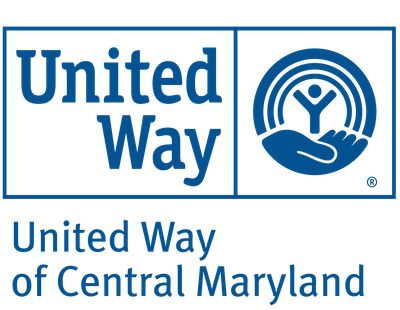New research: 63% of Maryland’s Black and Hispanic Children Lived in Financial Hardship Pre-Pandemic

New report and interactive tools reveal that federal poverty data undercounts how many children of all races are growing up amid financial insecurity.
Baltimore, MD (April 7, 2022) – The majority of Maryland’s Black and Hispanic children — 61 percent and 68 percent respectively — lived in households that couldn’t afford the basics in 2019, compared to 31 percent of white children, according to a new report from United Way of Central Maryland and its research partner United For ALICE.
ALICE in Focus: Children reveals the disproportionate impact of financial hardship on the state’s Black and Hispanic children, while also challenging the reliance on federal poverty guidelines for eligibility for assistance programs. The report finds traditional measures of poverty have severely undercounted the number of children of all races ages 18 and younger in Maryland who are growing up in financially insecure households.
While 12 percent of all children in the state were deemed in poverty in 2019, the report shows that 35 percent – more than twice as many – lived in families defined as ALICE (Asset Limited, Income Constrained, Employed). ALICE households earn more than the Federal Poverty Level, but less than what it costs to live and work in the modern economy. Combined, 47 percent of Maryland’s children lived in households below the ALICE Threshold, with income that doesn’t meet the basic costs of housing, child care, health care, transportation and a smartphone plan.
“Undercounting the number of children who are at risk can have lifelong consequences,” said Franklyn Baker, president and CEO, United Way of Central Maryland. “Thousands of children are locked out of receiving critical supports for stable housing, food, and quality education, all of which can inhibit healthy child development. We want to make sure that every child is accounted for, and do what we can to ensure they live in a stable environment – at home and at school.”
Because ALICE households often earn too much to qualify for public assistance, the report finds that more than 400,000 at-risk children didn’t access the Supplemental Nutrition Assistance Program or SNAP. Maryland lags behind its neighbors with just 32 percent of at-risk children enrolled in SNAP, compared with 34 percent in Delaware, 46 percent in Pennsylvania and 48 percent in Washington, DC.
Other findings from ALICE in Focus: Children include:
-
Having two working parents didn’t guarantee financial stability: 23 percent of Maryland children lived in a home with two working adults whose income didn’t meet the cost of basic needs in 2019.
-
Among households below the ALICE Threshold, families of Black children had the lowest homeownership rate at 29 percent in comparison with 57 percent of families of white children.
-
Nearly 185,920 children in households earning below the ALICE Threshold had no high-speed internet access at home.
“Having accurate, complete data is the foundation for designing equitable solutions,” said United For ALICE National Director Stephanie Hoopes, Ph.D. “COVID-19 hit ALICE families so much harder than others because they struggle to build savings yet often don’t qualify for financial assistance.”
According to the new research, 44 percent of Maryland families below the ALICE Threshold reported in the fall of 2021 that their children “sometimes or often” didn’t have enough to eat, in contrast with 24 percent of higher income families.
More data is available through the ALICE in Focus: Children interactive data dashboard – which provides filters for regional and local geographies, age, race, disability status, living arrangements and household work status. Visit UnitedForALICE.org/Focus-Children.
ALICE in Focus: Children is the first installment in the ALICE in Focus Research Series, which draws from the U.S. Census Bureau’s American Community Survey (ACS) Public Use Microdata Samples (PUMS). Each installment in the series will highlight a specific segment within the ALICE demographic. Upcoming topics include people with disabilities and veterans.
###
United Way of Central Maryland helps the working poor and those in poverty access basic needs like housing, healthcare, jobs, and education. The nonprofit’s programs promote equity, create opportunity, and improve the lives of our neighbors and the neighborhoods they call home. For nearly 100 years, United Way has tackled the toughest challenges in Baltimore City and Anne Arundel, Baltimore, Carroll, Harford and Howard counties. Learn more at uwcm.org.
About United For ALICE
United For ALICE is a driver of innovation, research and action to improve life across the country for ALICE (Asset Limited, Income Constrained, Employed) and for all. Through the development of the ALICE measurements, a comprehensive, unbiased picture of financial hardship has emerged. Harnessing this data and research on the mismatch between low-paying jobs and the cost of survival, ALICE partners convene, advocate and collaborate on solutions that promote financial stability at local, state and national levels. This grassroots ALICE movement, led by United Way of Northern New Jersey, has spread to 24 states and includes United Ways, corporations, nonprofits and foundations in Arkansas, Connecticut, Delaware, Florida, Hawai‘i, Idaho, Illinois, Indiana, Iowa, Louisiana, Maryland, Michigan, Mississippi, New Jersey, New York, Ohio, Oregon, Pennsylvania, Tennessee, Texas, Virginia, Washington, Washington, D.C., West Virginia and Wisconsin; we are United For ALICE. For more information, visit: UnitedForALICE.org.
